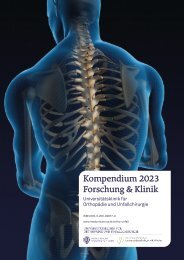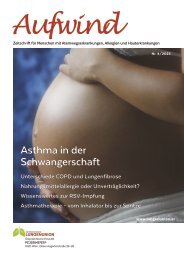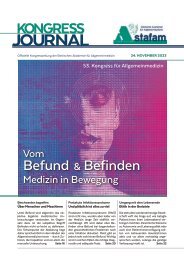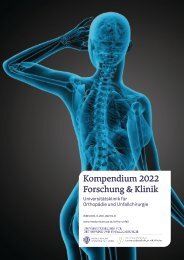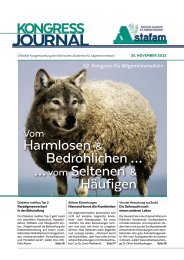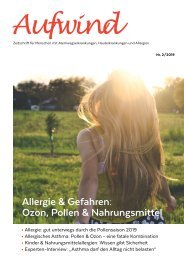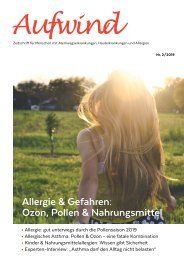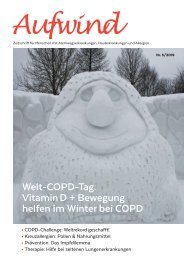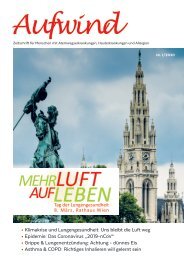Kompendium 2020 Forschung & Klinik
Das Kompendium 2020 der Universitätsklinik für Orthopädie und Unfallchirurgie von MedUni Wien und AKH Wien (o. Univ.-Prof. R. Windhager) stellt einen umfassenden Überblick über die medizinsichen Leistungen und auch die umfangreichen Forschungsfelder dar. Die Veröffentlichungen zeigen die klinische Relevanz und innovative Ansätze der einzelnen Forschungsrichtungen. Herausgeber: Universitätsklinik für Orthopädie und Unfallchirurgie MedUni Wien und AKH Wien Prof. Dr. R. Windhager ISBN 978-3-200-07715-7
Das Kompendium 2020 der Universitätsklinik für Orthopädie und Unfallchirurgie von MedUni Wien und AKH Wien (o. Univ.-Prof. R. Windhager) stellt einen umfassenden Überblick über die medizinsichen Leistungen und auch die umfangreichen Forschungsfelder dar. Die Veröffentlichungen zeigen die klinische Relevanz und innovative Ansätze der einzelnen Forschungsrichtungen.
Herausgeber: Universitätsklinik für Orthopädie und Unfallchirurgie
MedUni Wien und AKH Wien
Prof. Dr. R. Windhager
ISBN 978-3-200-07715-7
Create successful ePaper yourself
Turn your PDF publications into a flip-book with our unique Google optimized e-Paper software.
TOP-Studien<br />
46<br />
Biological Regeneration<br />
in Early Osteoarthritis<br />
In <strong>2020</strong>, researchers of the Department of Orthopedics and Trauma<br />
Surgery published an article entitled „Biological Regeneration of<br />
Articular Cartilage in an Early Stage of Compartmentalized Osteoarthritis:<br />
12-Month Results“ in the American Journal of Sports<br />
Medicine 1 . The paper was the result from fruitful interdisciplinary<br />
cooperation between clinical scientists, orthopedic surgeons, and<br />
basic researchers. For her work, Dr. Martina Hauser-Schinhan was<br />
awarded the Research Award of the „Österreichische Gesellschaft<br />
für Orthopädie und Orthopädische Chirurgie (ÖGO)“ which honors<br />
outstanding scientific contributions that have an impact on the<br />
entire field of orthopedics.<br />
Background<br />
Osteoarthritis is the most common joint disease in the western world. It is<br />
characterized by degenerative chondropathy, subchondral bone sclerosis,<br />
and the presence of osteophytes. In contrast to focal cartilage defects,<br />
osteoarthritis affects the entire joint. To date, the curative treatment of<br />
osteoarthritis is limited to joint replacement surgery. However, this entails<br />
certain surgical risks and limited implant survival, especially in young sportive<br />
patients. The demands regarding regeneration, which are also made more<br />
and more by older patients due to their increased activity, can often not be<br />
met with artificial joints. In localized cartilage defects without osteoarthritis,<br />
cartilage regeneration using different methods depending on the size of the<br />
defect has already become clinical reality 2 .<br />
Study:<br />
Schinhan M, Toegel S, Weinmann<br />
D, Schneider E, Chiari C,<br />
Gruber M, Nehrer S, Windhager<br />
R. Biological Regeneration of<br />
Articular Cartilage in an Early<br />
Stage of Compartmentalized<br />
Osteoarthritis: 12-Month<br />
Results. Am J Sports Med.<br />
<strong>2020</strong> May;48(6):1338–1346.<br />
The autologous chondrocyte transplantation technique was already described<br />
in 1994 by Brittberg et al. 3 . A further development of this approach is<br />
MACT (matrix-assisted autologous chondrocyte transplantation), in which<br />
chondrocytes are inserted into the cartilage defect on a carrier matrix. Due<br />
to the poor results of this technique in arthritic joint conditions 4 , the patient<br />
group with early osteoarthritis can only be treated with symptomatic therapy.<br />
Methods<br />
To find a solution for this group of patients, two large animal studies with<br />
follow-up periods of 4 and 12 months, respectively, were carried out as<br />
part of an EU-funded project 1,5 . In total, 48 Austrian mountain sheep were<br />
operated twice. First, unicompartmental osteoarthritis was induced in the<br />
stable joint by removing a standardized cartilage cylinder (7 mm defect with<br />
a loading time of 12 weeks). The removed cartilage was used for the isolation<br />
and cultivation of autologous chondrocytes. In a second procedure, the sheep




